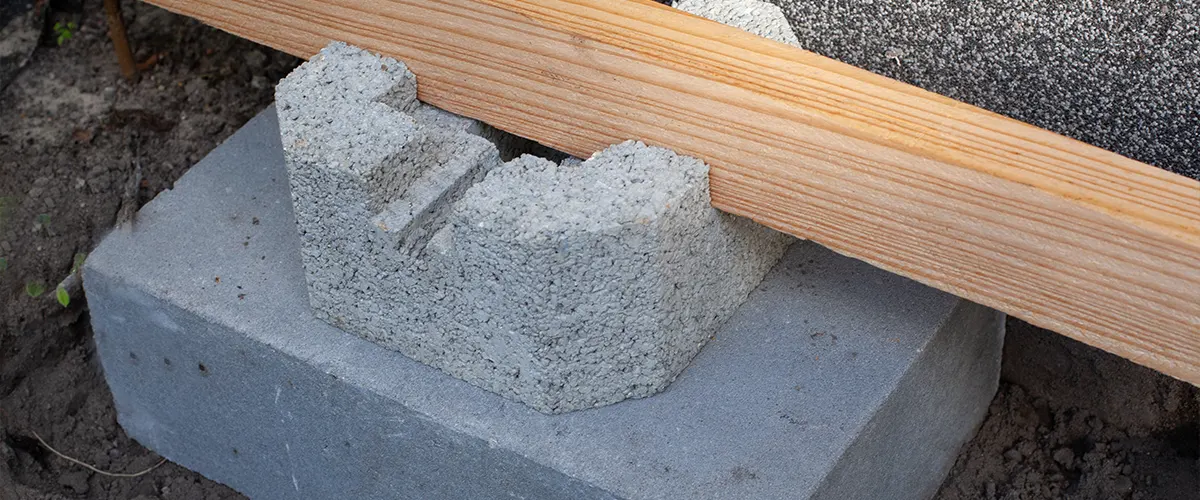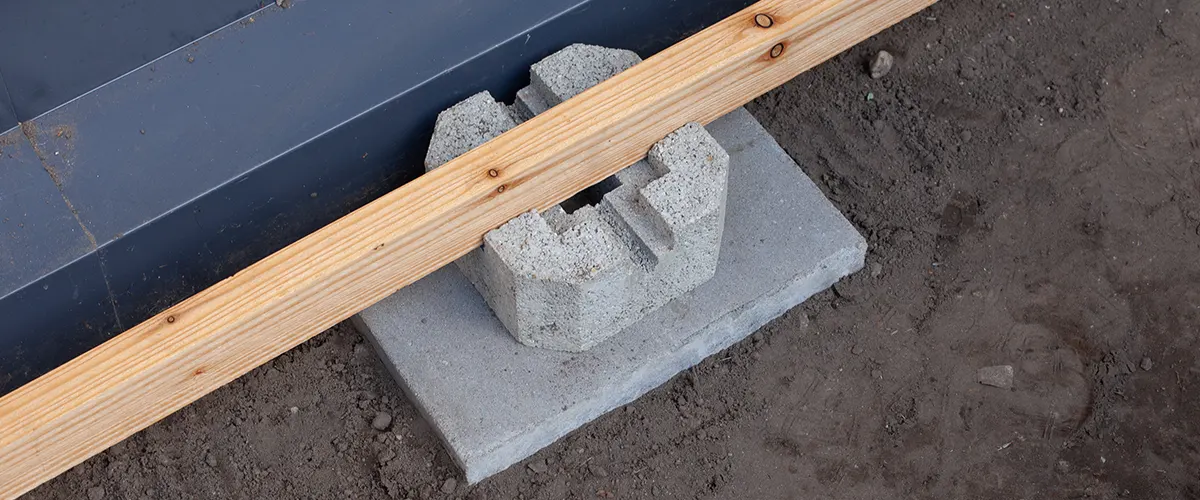Secure Foundations, Long-term Perceptions: Understanding the Art of Deck Footings Installation
Wiki Article
Selecting the Right Deck Footings for Security and Toughness
The long life and safety and security of your deck depend greatly on the type of grounds you select, as they provide the vital support and stability to endure the test of time. In this conversation, we will certainly explore the various types of deck grounds, think about the essential elements to evaluate when making a decision, and dig into the pros and cons of various choices.Kinds of Deck Grounds
These grounds consist of a round hole loaded with concrete, which provides a solid structure for the deck articles. Concrete pier footings are fairly simple to set up and provide exceptional security, making them a preferred selection for many deck tasks.One more kind of ground is the helical stack footing. Helical piles are steel shafts with helical plates attached to them. These grounds are installed by screwing them right into the ground, which develops a safe and secure structure for the deck. Helical heap grounds are excellent for areas with challenging soil conditions, as they can be set up in almost any type of soil. If required., they likewise allow for easy change and progressing of the deck.
Conversely, some builders decide for precast concrete grounds. These grounds are made of resilient concrete and can be found in numerous sizes and shapes to accommodate different deck designs. Precast concrete grounds are hassle-free to set up and provide a stable base for the deck structure.
Lastly, one more choice is the post-in-anchor ground system. This sort of ground entails driving a steel support into the ground and connecting it to the deck article. It supplies flexibility in regards to placing the deck posts and appropriates for decks with lightweight frameworks.
When picking the right sort of deck footing, it is necessary to take into consideration aspects such as soil problems, deck tons, and local building ordinance (Deck Footings). Consulting with an expert specialist or architectural engineer can assist make certain the suitable ground is picked for a secure and safe deck
Aspects to Consider When Selecting Grounds
When selecting the ideal footings for a deck, it is essential to carefully think about various variables such as dirt conditions, deck lots, and adherence to regional building regulations. These factors play a significant duty in guaranteeing the stability and sturdiness of the deck structure.Among the main factors to take into consideration is the dirt problems. The sort of soil on which the deck will be built figures out the type of grounds required. For example, decks developed on loosened or sandy dirts might call for much deeper grounds to provide sufficient support and stop settling. On the other hand, decks improved clay or large soils may call for footings that can accommodate the dirt's tendency to expand and contract.
One more crucial element is the deck load. The weight of the deck, consisting of the products utilized and any prospective real-time lots such as furniture or gatherings, have to be considered when picking grounds. The grounds need to be created to birth the weight of the deck and disperse it equally to stop any type of architectural issues or failings.
Lastly, adherence to regional building ordinance is extremely important. Structure codes differ from region to area, and it is important to conform with the particular requirements established by the neighborhood authorities. Deck Footings. These codes make certain that the deck is developed safely and meets the necessary standards for structural stability and load-bearing capacity
Concrete Footings: Advantages And Disadvantages

When made use of as the foundation for a deck,Concrete footings use numerous advantages and disadvantages. On the favorable side, concrete footings provide outstanding stability and durability. Concrete is a strong and rigid material that find more can sustain heavy loads and hold review up against various climate condition. It also has a long life expectancy, making it a dependable option for long-lasting usage.
Another advantage of concrete footings is their convenience. They can be poured right into various forms and dimensions to accommodate various deck designs and setups. Concrete footings can be personalized to fit the details demands and requirements of the deck framework.
Nevertheless, there are additionally some disadvantages to utilizing concrete grounds. This can boost the total price of the deck project and might call for expert assistance.

Helical Piers Vs. Sonotubes: Which Is Better?
In taking into consideration the foundation choices for a deck, the contrast between helical piers and sonotubes is critical in figuring out the superior option. They are turned right into the ground using hydraulic machinery, offering a stable and resilient foundation for the deck.When it concerns stability and sturdiness, helical piers have the upper hand. The helical plates on the piers produce a solid grasp with the soil, stopping any kind of movement or moving of the deck. This is specifically valuable in areas with unsteady or moving dirt problems. Sonotubes, on the various other hand, count entirely on the concrete filling up for security, which might not use the exact same level of toughness and resistance.
In regards to installation, helical piers are reasonably less complicated and faster to mount compared to sonotubes. The hydraulic machinery used to twist the piers into the ground guarantees a quick and reliable procedure. Sonotubes, on the various other hand, require excavating openings and pouring concrete, which can be labor-intensive and taxing.
Furthermore, helical piers are an even more versatile choice. If needed, they can be made use of in various soil conditions and can be readjusted or reinforced. Sonotubes, on the other hand, might need additional assistance, find out this here such as rebar, in particular dirt conditions or areas with high tons needs.
Selecting the Right Footings for Your Deck's Measurements
For optimum structural stability, it is vital to very carefully pick the appropriate footings that line up with the measurements of your deck. The measurements of your deck, including its width, length, and elevation, play a considerable duty in figuring out the type and size of grounds called for.When choosing grounds for your deck, it is necessary to think about the load-bearing ability of the dirt. The weight of the deck, combined with the weight of any type of furnishings or people on it, puts in a substantial pressure on the grounds (Deck Footings). It is crucial to choose grounds that can sufficiently sustain this weight without changing or sinking over time.
The size and shape of the grounds need to likewise be taken into consideration. Larger decks with greater measurements need larger footings to give adequate stability and support. The form of the grounds, whether they are square or round, depends on the layout and format of the deck. In addition, the deepness at which the grounds are set up ought to be established based upon the frost line in your region to prevent any heaving or shifting as a result of freezing temperature levels.
Verdict
In conclusion, selecting the right deck footings is critical for making sure stability and toughness. Factors such as the type of grounds, the deck's measurements, and the pros and cons of various options ought to be taken into consideration.These footings are composed of a round hole filled with concrete, which gives a solid structure for the deck articles. Concrete pier grounds are relatively simple to mount and supply excellent stability, making them a popular choice for numerous deck jobs.
Precast concrete footings are practical to set up and supply a steady base for the deck framework.
It supplies flexibility in terms of positioning the deck articles and is ideal for decks with lightweight structures.
Concrete footings offer numerous benefits and disadvantages when utilized as the structure for a deck.
Report this wiki page